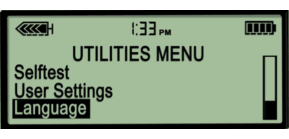1.Get Active — Exercise
The healthiest way to deal with stress is with physical activity. Stress tries to help us survive the only way it knows how, by getting us to move. If you don’t exercise, most of the glucose your body puts out will turn into abdominal fat. That’s why stress and inactivity are a lethal combination.
So get out and run or swim or bike or walk your dog. Consider exercise that makes you stronger and tougher — for example weight-lifting, . You’ll wind up feeling more confident and therefore less stressed.
Getting active means more than just exercising. We’re usually better off taking a more active role in our own lives, meaning we don’t let the media and other people decide what we eat and what we do.
We decide for ourselves. When we can decide what’s important to us, when we connect with other people to live in ways that are meaningful to us, we will have less stress and better blood sugar control.
Once you’re in the habit of being physically active, try to incorporate regular exercise into your daily schedule.
Activities that are continuous and rhythmic—and require moving both your arms and your legs—are especially effective at relieving stress.
Walking, running, swimming, dancing, cycling and aerobic classes are good choices.
Pick an activity you enjoy, so you’re more likely to stick with it.
Instead of continuing to focus on your thoughts while you exercise, make a conscious effort to focus on your body and the physical (and sometimes emotional) sensations you experience as you’re moving.
Adding this element to your exercise routine will help you break out of the cycle of negative thoughts that often accompanies overwhelming stress.
2.We all need positive goals and reasons to live
A life without meaning or connection can be perceived as a threat to your mental health.
Sometimes we need to spend time figuring out what’s important to us and commit to spending more energy on positive things.
Make an effort to replace negative thoughts with positive ones.
Each time you think a negative thought about yourself, your body reacts as if it were in the throes of a tension-filled situation. Regain your sense of control by changing your expectations and attitude to stressful situations.
Reframe problems. Try to view stressful situations from a more positive perspective. Rather than fuming about a traffic jam, look at it as an opportunity to pause and regroup, listen to your favorite radio station, or enjoy some alone time.
Look at the big picture. Take perspective of the stressful situation. Ask yourself how important it will be in the long run. Will it matter in a month? A year? Is it really worth getting upset over? If the answer is no, focus your time and energy elsewhere.
Adjust your standards. Perfectionism is a major source of avoidable stress. Stop setting yourself up for failure by demanding perfection. Set reasonable standards for yourself and others, and learn to be okay with “good enough.”
3.Self-confidence
Self-confidence is a major element of power and perceived control.
You can build self-confidence by accomplishing small goals, by learning new skills , or by seeing other people with diabetes accomplish something. If they can do it, you can too!
Many people find that a hobby which has no deadlines, no pressures, and which can be picked up or left easily, takes the mind off stresses.
For example: knitting, music, model-making and puzzles.
4.Assemble a support team.
Treating diabetes shouldn’t be a solo effort. Your team should include a doctor, nurses, diabetes educators, a social worker, and your family and friends. They all should be ready to support you and cheer you on when you need encouragement.
Volunteer or find another way to be active in your community, which creates a support network and gives you a break from everyday stress.
5.Take time for yourself
One key aspect of reducing the effects of stress on your blood sugar level—and your health in general—is to consciously insert rest time into your life.
They don’t have to be long, but they should be frequent, because rest is essential for your health and psychological and spiritual well-being.
If you don’t make time for rest, your body will demand it—by getting sick.
Listen to music, prayer , get a massage, or learn relaxation techniques. Stepping back from the problem helps clear your head.
6.Healthy Life-style
Do not skip any meals. Do keep healthful, energy-boosting snacks on hand,keep to your diabetic diet plan.
Well-nourished bodies are better prepared to cope with stress, so be mindful of what you eat.
Start your day right with breakfast, and keep your energy up and your mind clear with balanced, nutritious meals throughout the day.
Reduce caffeine and sugar. The temporary “highs” caffeine and sugar provide often end in with a crash in mood and energy. By reducing the amount of coffee, soft drinks, chocolate, and sugar snacks in your diet, you’ll feel more relaxed,have better diabetes blood sugar control and you’ll sleep better.
Swap caffeinated and alcoholic drinks for water, herbal teas, or diluted natural fruit juices and aim to keep yourself hydrated as this will enable your body to cope better with stress.
Avoid alcohol, cigarettes, and drugs. Self-medicating with alcohol or drugs may provide an easy escape from stress, but the relief is only temporary. Don’t avoid or mask the issue at hand; deal with problems head on and with a clear mind.
Get enough sleep. Adequate sleep fuels your mind, as well as your body. Feeling tired will increase your stress because it may cause you to think irrationally.
Rather than relying on medication, your aim should be to maximise your relaxation before going to sleep.
Make sure that your bedroom is a tranquil oasis with no reminders of the things that cause you stress.
Avoid caffeine during the evening, as well as excessive alcohol if you know that this leads to disturbed sleep.
Stop doing any mentally demanding work several hours before going to bed so that you give your brain time to calm down.
Try taking a warm bath or reading a calming, undemanding book for a few minutes to relax your body, tire your eyes and help you forget about the things that worry you.
You should also aim to go to bed at roughly the same time each day so that your mind and body get used to a predictable bedtime routine.
7.Learn what triggers your anxiety.
Is it work, family, school, or something else you can identify? Write in a journal when you’re feeling stressed or anxious, and look for a pattern.
Don’t get so caught up in the hustle and bustle of life that you forget to take care of your own needs. Nurturing yourself is a necessity, not a luxury.
Set aside relaxation time. Include rest and relaxation in your daily schedule. Don’t allow other obligations to encroach. This is your time to take a break from all responsibilities and recharge your batteries.
Do something you enjoy every day. Make time for leisure activities that bring you joy, whether it be reading, playing the piano, or working in your workshop.
8.Talk to someone.
Tell friends and family you’re feeling overwhelmed, and let them know how they can help you. Talk to a doctor or therapist for professional help.
Social engagement is the quickest, most efficient way to rein in stress and avoid overreacting to internal or external events that you perceive as threatening.
There is nothing more calming to your nervous system than communicating with another human being who makes you feel safe and understood.
The people you talk to don’t have to be able to fix your stress; they just need to be good listeners.
Opening up is not a sign of weakness and it won’t make you a burden to others.
9.Avoid unnecessary stress
It’s not healthy to avoid a stressful situation that needs to be addressed, but you may be surprised by the number of stressors in your life that you can eliminate.
Learn how to say “no” – Know your limits and stick to them. Whether in your personal or professional life, taking on more than you can handle is a surefire recipe for stress.
Distinguish between the “shoulds” and the “musts” and, when possible, say “no” to taking on too much.
Avoid people who stress you out – If someone consistently causes stress in your life, limit the amount of time you spend with that person, or end the relationship.
Take control of your environment – If the evening news makes you anxious, turn off the TV. If traffic makes you tense, take a longer but less-traveled route. If doing the food shop is an unpleasant chore, do your grocery shopping online.
10.Alter the situation
If you can’t avoid a stressful situation, try to alter it. Often, this involves changing the way you communicate and operate in your daily life.
Express your feelings instead of bottling them up. If something or someone is bothering you, be more assertive and communicate your concerns in an open and respectful way. If you don’t voice your feelings, resentment will build and the stress will increase.
Be willing to compromise. When you ask someone to change their behavior, be willing to do the same. If you both are willing to bend at least a little, you’ll have a good chance of finding a happy middle ground.
Manage your time better. Poor time management can cause a lot of stress. But if you plan ahead and make sure you don’t overextend yourself, you’ll find it easier to stay calm and focused.
11.Accept the things you can’t change

God grant me the serenity to accept the things I cannot change, the courage to change the things I can, and the wisdom to know the difference – 11×14
Many sources of stress are unavoidable. You can’t prevent or change stressors, such as the death of a loved one, a serious illness, or a national recession. In such cases, the best way to cope with stress is to accept things as they are. Acceptance may be difficult, but in the long run, it’s easier than railing against a situation you can’t change.
Don’t try to control the uncontrollable. Many things in life are beyond our control—particularly the behavior of other people. Rather than stressing out over them, focus on the things you can control such as the way you choose to react to problems.
Look for the upside. When facing major challenges, try to look at them as opportunities for personal growth. If your own poor choices contributed to a stressful situation, reflect on them and learn from your mistakes.
Learn to forgive. Accept the fact that we live in an imperfect world and that people make mistakes. Let go of anger and resentments. Free yourself from negative energy by forgiving and moving on.
12.Positive relaxation
Willow Organic Beauty Valentine’s Relaxation Bath Box
Set specific times aside to relax positively. Don’t just let relaxation happen, or not happen, at the mercy of work, family, etc. Plan it, and look forward to it.
Different people prefer different things. A long bath, a quiet stroll, sitting and just listening to a piece of music, etc. These times are not wasteful, and you should not feel guilty about not ‘getting on with things’. They can be times of reflection and putting life back in perspective.
Some people find it useful to set time aside for a relaxation such as prayer meditation ,reading the bible or muscular exercises. You can also buy relaxation tapes to help you learn to relax.
Try simple relaxation techniques
Deep breathing.
This means taking a long, slow breath in, and very slowly breathing out. If you do this a few times, and concentrate fully on breathing, you may find it quite relaxing.
Some people find that moving from chest breathing to tummy (abdominal) breathing can be helpful.
Sitting quietly, try putting one hand on your chest and the other on your abdomen.
You should aim to breathe quietly by moving your abdomen with your chest moving very little.
This encourages the diaphragm to work efficiently and may help you avoid over-breathing.
Muscular tensing and stretching.
Try twisting your neck around each way as far as it is comfortable, and then relax.
Try fully tensing your shoulder and back muscles for several seconds, and then relax completely.
Creative Visualisation: You are encouraged to imagine yourself lying in a cornfield, in a hammock by the sea, sitting in a deck chair, or anywhere you feel relaxed and to hear the sounds of the trees, wind and waves.
Being immersed in such an idyllic scene induces a state of relaxation and tension should drain away.
Quieting: Aims to provide a way of diverting the mind from stressful thoughts by focusing on more relaxing emotions: for example, praying, focusing on breathing, counting things such as instances of a particular colour.
The traditional ‘counting sheep’ when trying to fall asleep can be seen as a form of quieting.
13.Treatment
Some people find they have times in their life when stress or anxiety becomes severe or difficult to cope with.
See a doctor if stress or anxiety becomes worse.
Further treatments such as anxiety management counselling or medication may be appropriate.
Very often such medication are prescribed to treat the immediate symptoms of stress or to help the sufferer get through a crisis.
Medication will not necessarily address the causes of stress in the long term.
Medication may also lead to dependence, if you think you need medication to help with your stress discuss your options carefully with your doctor or other healthcare provider.
14.Be prepared for setbacks
Don’t get discouraged if you occasionally fail to handle a stressful situation as well as you might like.
15.Rest If You Are Ill
If you are feeling unwell, do not feel that you have to carry on regardless.
A short spell of rest will enable the body to recover faster.
16.Help other people
Evidence shows that people who help others, through activities such as volunteering or community work, become more resilient.
Helping people who are often in situations worse than yours will help you put your problems into perspective.
The more you give, the more resilient and happy you feel.
If you don’t have time to volunteer, try to do someone a favour every day.
It can be something as small as helping someone to cross the road or looking after a pet for a friend.
17.Work smarter
Working smarter means prioritising your work, concentrating on the tasks that will make a real difference.
Leave the least important tasks to last.
Accept that your in-tray may sometimes be full. Don’t expect it to be empty at the end of every day.
Most people suffer from stress at some time in their lives.
An understanding of the causes of stress and learning to avoid stressful situations will help alleviate some of its negative consequences.
Some people also find it useful to use one of the many techniques or other approaches to relaxation to help manage stress themselves.
For more great Health and Nutrition Tips refer to the website positivehealthwellness.com.
If you have any information,questions, or feedback you would like to include in this post.
Please email momo19@diabetessupportsite.com or leave your comments below.































 <>Select 12 Hour Setup or 24 Hour Setup and press ACT.
<>Select 12 Hour Setup or 24 Hour Setup and press ACT.
 <>Select your language, then press ACT.
<>Select your language, then press ACT.















